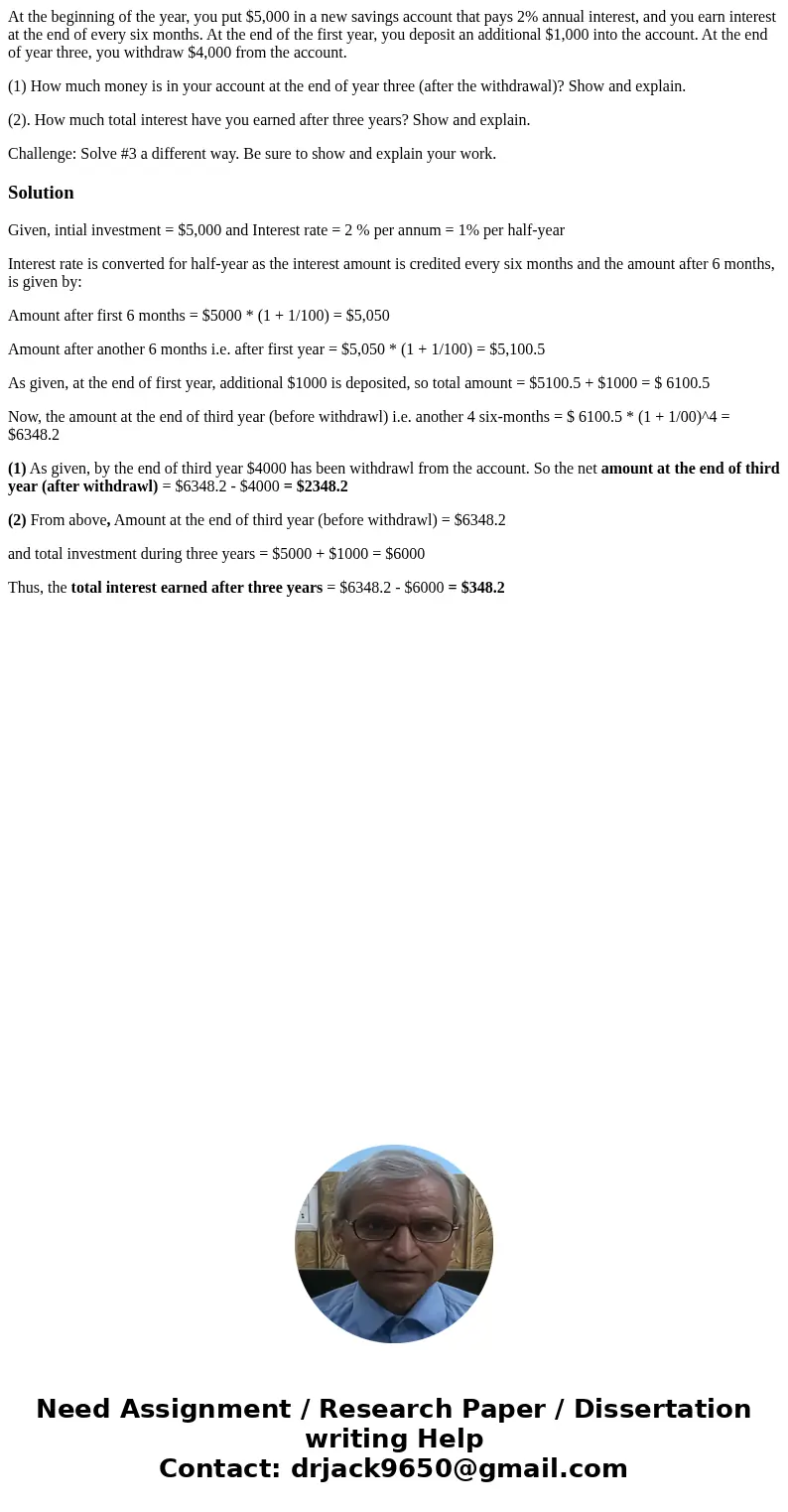At the beginning of the year you put 5000 in a new savings a
At the beginning of the year, you put $5,000 in a new savings account that pays 2% annual interest, and you earn interest at the end of every six months. At the end of the first year, you deposit an additional $1,000 into the account. At the end of year three, you withdraw $4,000 from the account.
(1) How much money is in your account at the end of year three (after the withdrawal)? Show and explain.
(2). How much total interest have you earned after three years? Show and explain.
Challenge: Solve #3 a different way. Be sure to show and explain your work.
Solution
Given, intial investment = $5,000 and Interest rate = 2 % per annum = 1% per half-year
Interest rate is converted for half-year as the interest amount is credited every six months and the amount after 6 months, is given by:
Amount after first 6 months = $5000 * (1 + 1/100) = $5,050
Amount after another 6 months i.e. after first year = $5,050 * (1 + 1/100) = $5,100.5
As given, at the end of first year, additional $1000 is deposited, so total amount = $5100.5 + $1000 = $ 6100.5
Now, the amount at the end of third year (before withdrawl) i.e. another 4 six-months = $ 6100.5 * (1 + 1/00)^4 = $6348.2
(1) As given, by the end of third year $4000 has been withdrawl from the account. So the net amount at the end of third year (after withdrawl) = $6348.2 - $4000 = $2348.2
(2) From above, Amount at the end of third year (before withdrawl) = $6348.2
and total investment during three years = $5000 + $1000 = $6000
Thus, the total interest earned after three years = $6348.2 - $6000 = $348.2

 Homework Sourse
Homework Sourse